If You Notice This on a $20 Bill, Don’t Use It, Police Warn
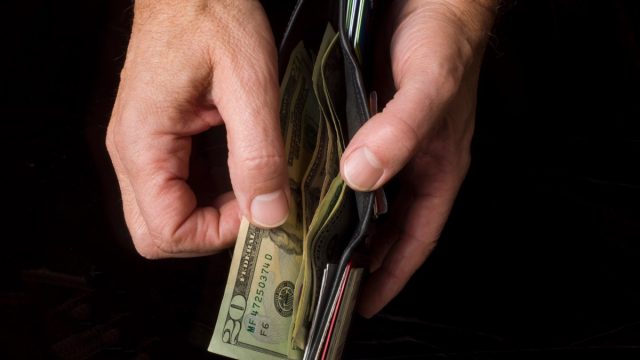
For many of us, carrying cash has become something a rarity. Businesses and restaurants make it easy to pay with a credit or debit card, and thanks to innovative features like Apple Pay, you can make a payment just by tapping your phone. But if you do prefer to use cash regularly—or just have it on hand in case of emergencies—you’ll want to take a second look at your $20 bills. Read on to find out what could be concerning about these notes, and why police are asking you not to use them.
READ THIS NEXT: If a Stranger Asks About This, Make Sure Your Doors Are Locked, Police Warn.
Authorities have issued multiple money-related warnings this year.
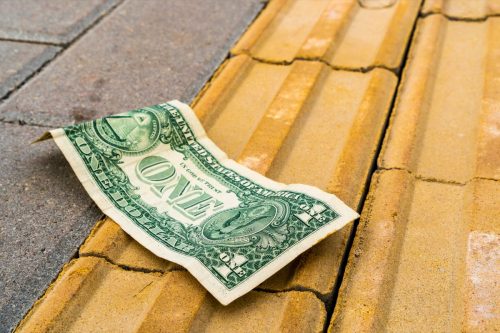
Earlier this summer, police in Giles County, Tennessee asked the public not to pick up money found on the ground. According to a warning published by the department on Facebook, folded dollar bills specifically could contain fentanyl, a synthetic opioid that is often abused and added to heroin.
At the time of the warning, police had received two reports of folded dollar bills found on the floor of gas stations, which both tested positive for fentanyl, as well as methamphetamine—an addictive stimulant. And while studies have shown that briefly touching or accidentally handling fentanyl will not be fatal, the general public was still asked to exercise caution and be aware of children who could stumble upon these bills.
Now, police are cautioning the public about $20 bills that may already be in your wallet.
Check your cash for this, police warn.
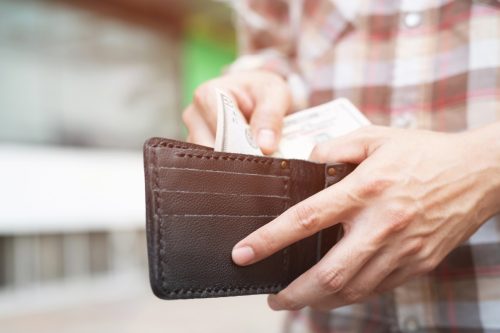
Many of us hand over cash or get change without thinking much of it. But you may want to go through your wallet sooner rather than later, as you could have inadvertently received counterfeit bills.
In a public service announcement (PSA) posted on Facebook, police in Clarksville, Arkansas warned residents about $20 bills that could actually be fake. “The Clarksville Police Department has received reports of counterfeit $20 bills being passed as real currency,” police wrote in the PSA. “Please pay attention as some notes can appear very real!”
RELATED: For more up-to-date information, sign up for our daily newsletter.
Look for certain markings on the bills.
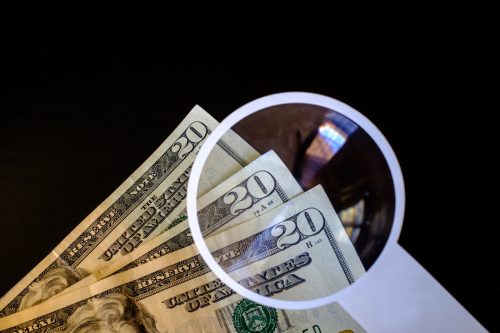
Receiving counterfeit cash is unfortunate and inconvenient, but because these bills are illegal, using counterfeit money is a bit more concerning. To avoid landing yourself in hot water, police are asking that you look for specific writing on $20 bills.
These bills look legitimate at first glance, but upon further inspection, some twenties explicitly tell you they’re fake. According to police, these bills have “COPY MONEY” printed on the front of the bill, on the top left corner, as well as printed vertically on the reverse side of the bill.
But while the writing is clear as day in photos posted by police in the PSA, authorities warn that this isn’t always the case, and some counterfeit bills might not have this giveaway printed on them.
Here are some tips and tricks to check if your $20 is real.
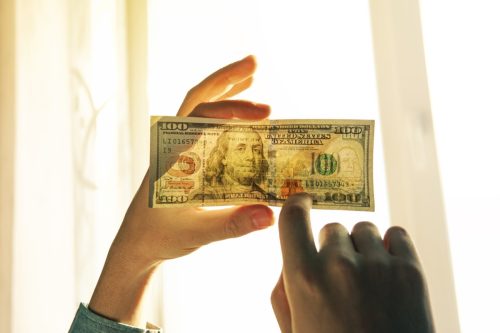
Clarksville Police included a link to the U.S. Currency Education Program, which outlines the characteristics of each banknote, ranging from the $1 bill all the way up to the $100 bill.
On the $20 bill, there are three main things you can look for, including the security thread, which is located directly to the left of Andrew Jackson’s shoulder. When held up to a light, you can see the embedded thread running vertically, which is imprinted with “USA TWENTY” and a small flag. You can see this on both sides of the bill, and it will glow green if you use ultraviolet light.
When held up to the light, you should also check for “a faint image of President Jackson” on the right side of the portrait in the blank space. You can again see this on both sides of the note.
The third key identifier is the bill’s color-shifting ink. To check for this, tilt the note and you should see the numeral 20, located on the bottom right corner, shift from a copper color to green.